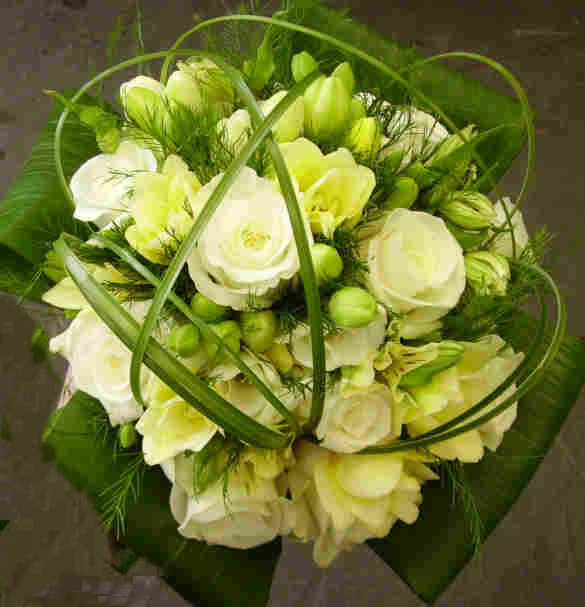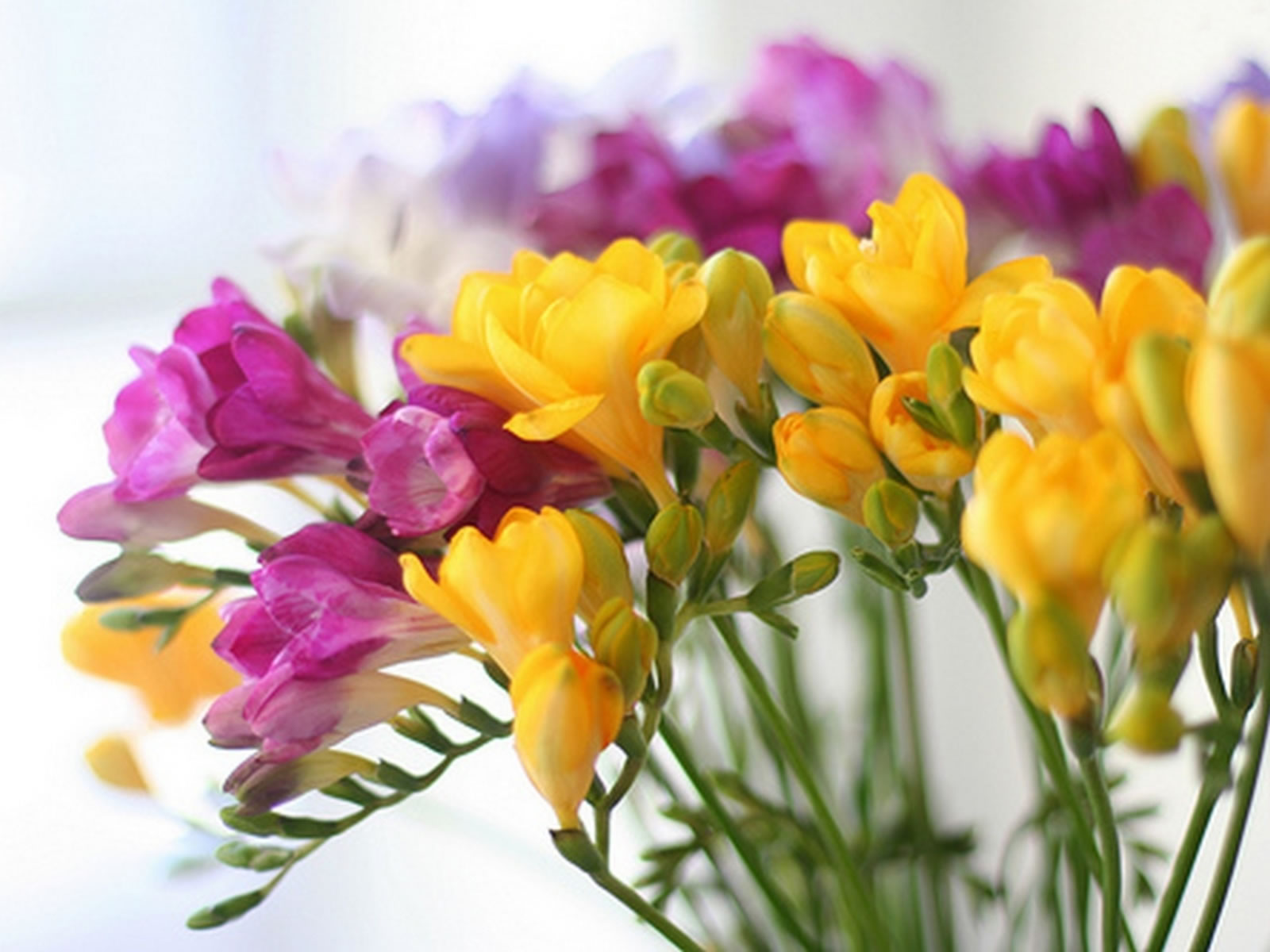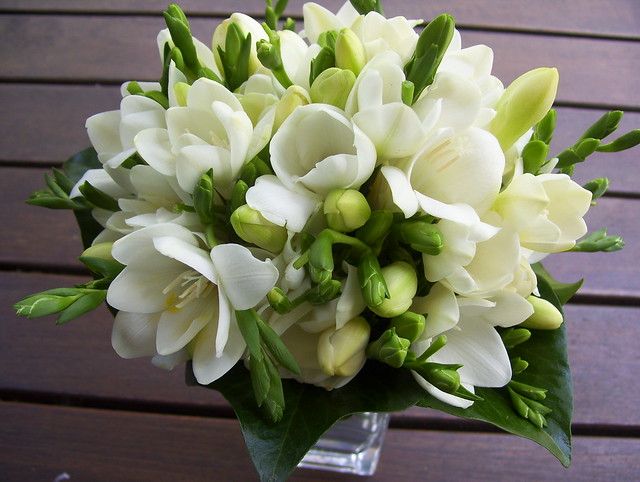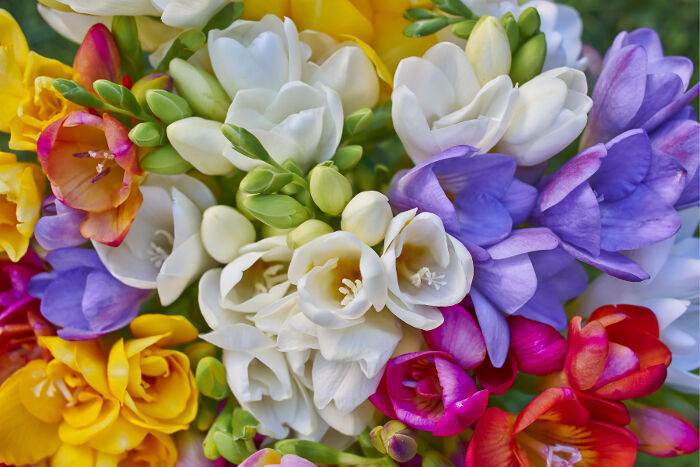
Freesia is a genus of herbaceous perennial flowering crops in the family Iridaceae, first described as a genus in 1866 by Chr. Fr. Echlon (1795-1868) and named after German botanist and doctor Friedrich Freese (1794-1878). It really is local to the eastern aspect of southern Africa, from Kenya south to South Africa, most species being within Cape Provinces. Species of the past genus Anomatheca are now contained in Freesia. The crops often called "freesias", with fragrant funnel-shaped flowers, are cultivated hybrids of lots of Freesia kinds. Some other types are also grown as ornamental crops.
They are simply herbaceous crops which develop from a conical corm 1-2.5 cm diameter, which sends up a tuft of narrow leaves 10-30 cm long, and a sparsely branched stem 10-40 cm high bearing a few leaves and a loose one-sided spike of blossoms with six tepals. Many types have fragrant narrowly funnel-shaped blossoms, although those formerly placed in the genus Anomatheca, such as F. laxa, have smooth flowers. Freesias are being used as food plant life by the larvae of some Lepidoptera species including Large Yellow Underwing.
CULTIVATION AND USES
The vegetation usually called "freesias" derive from crosses made in the 19th century between F. refracta and F. leichtlinii. Numerous cultivars have been bred from these varieties and the red- and yellow-flowered types of F. corymbosa. Modern tetraploid cultivars have bouquets which range from white to yellowish, red, red and blue-mauve. They are really mostly cultivated properly in holland by about 80 growers.[3] Freesias can be immediately increased from seed. Due to their specific and desirable scent, they are often used in hand lotions, shampoos, candles, etc.[citation needed], however, the blooms are mainly used in wedding bouquets. They can be planted in the street to redemption in USDA Hardiness Zones 9-10 (i.e. where the temperature does not fall below about -7 ?C (20 ?F)), and in the spring and coil in Zones 4-8.
Freesia laxa (formerly called Lapeirousia laxa or Anomatheca cruenta) is one of the other varieties of the genus which is often cultivated. Smaller than the scented freesia cultivars, it includes flat somewhat than cup-shaped bouquets. Extensive 'forcing' of the bulb occurs in two Moon Bay in California where several growers chill the lights in proprietary methods to satisfy wintry dormancy which results in formation of buds in just a predicted number of weeks - often 5 weeks at 55 ?F (13 ?C).
Herbaceous plants (in botanical use frequently simply natural herbs) are plant life that have no continual woody stem above floor. Herbaceous plant life may be annuals, biennials or perennials. Annual herbaceous plants pass away completely at the end of the growing season or when they have flowered and fruited, plus they then develop again from seed. Herbaceous perennial and biennial plants may have stems that pass away by the end of the growing season, but parts of the plant survive under or close to the bottom from season to season (for biennials, before next growing season, when they bloom and pass away). New growth advances from living tissues remaining on or under the bottom, including origins, a caudex (a thickened part of the stem at walk out) or various types of underground stems, such as lights, corms, stolons, rhizomes and tubers. Types of herbaceous biennials include carrot, parsnip and common ragwort; herbaceous perennials include potato, peony, hosta, mint, most ferns & most grasses. In comparison, non-herbaceous perennial plants are woody crops that have stems above surface that stay alive during the dormant season and grow shoots the next calendar year from the above-ground parts - these include trees, shrubs and vines.
The Freesia flower: Its Meanings amp; Symbolism

Symbolic Meanings of Flowers That You39;ve Been Wanting to Know

Freesia Flowers are Welcoming Spring Ingset39;s Blog

Freesia is very fragrant and is used as filler in floral arrangements
























